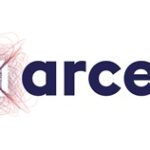As the demand for next-generation networks grows, many countries face spectrum shortage challenges with insufficient spectrum to support bandwidth-hungry applications and increased demands for IoT connections.
As a result spectrum regulators face an increased focus to devise dynamic and flexible spectrum management policies to ensure the best use of this essential resource. Exploiting higher frequency bands like mmWave bands is used by many national regulators using spectrum across a variety of bandwidths. This months’ blog looks at the different approaches taken by some leading regulators to facilitate dynamic spectrum access.
 Italian spectrum sharing platform - 5G (26.5GHz-27. 5GHz)
Italian spectrum sharing platform - 5G (26.5GHz-27. 5GHz)
In 2019, Italy was the first European country to award three 5G pioneer bands. Spectrum was awarded in 700MHz band, 3.6-3.8GHz band, with the largest portion in the 26.5-27.5 GHz band. This innovative auction applied a ‘use it or lease’ it clause, as part of the license conditions. The aim was to support a swift nationwide-5G rollout with full coverage for the country.
In addition, the 26GHz award featured a unique approach to spectrum use, where licensees can use up to all the awarded spectrum (up to 1Gz) in areas where frequencies are not used by other licensees. Each license holder has pre-emptive rights on its assigned lot but has to provide access to other operators for the 5G rollout. To provide access to this spectrum, MiSE, the Ministry of Economic Development, is undertaking a competitive tender for the supply of a dynamic spectrum access solution.
Web-based platform
This web-based platform will allow licensees to assess whether the spectrum is being used and, if not, whether it can be reused by another licensee. The dynamic spectrum access solution will identify where spectrum is available and any conflicts with licences to ensure spectrum is managed efficiently. All licensees receive email updates when interference is identified. Users will be able to load their network into the system and complete coverage calculations which incorporate network files from other licensees (discrete files which are not directly accessible by the other licensees). Based on the results from the compatibility analysis, a licence can be used or access rights withheld.
 France Spectrum Sharing platform (2.6GHz)
France Spectrum Sharing platform (2.6GHz)
In 2019, French regulator ARCEP allocated the 2600 TDD MHz band (band #38, 2570-2620 MHz) to mobile network operators. In conjunction with the regulator, ATDI created a module to allow users to submit online frequency requests for PMR allotments.
This web-based platform manages online applications and back-office functions for allocations and band management. The project’s main aim was to streamline the process by generating notifications, reminders and deeds directly from the portal rather than individual user’s mailboxes. These updated processes provided greater transparency for both internal and external stakeholders, while ensuring records were updated once the application is complete.
The solution provided a front-end service where the user checks whether there is an overlap with existing allotments. Once complete, the user specifies the requested frequency band, adds attachments and makes the request. Documents can be uploaded directly through the portal and attached to each application. As a back-office service, the regulator can access pending requests. When a new request is made, the application is processed through a workflow to ensure it complies with the spectrum regulations before assignment. The regulator can view all overlapping frequencies in the band and once allotment can be confirmed an automatic acceptance/rejection letter can be sent to the operator and the user account is updated. During the allotment process, the application status is updated to enable the operator to follow the assignment process for each request. Administration rights allow significant flexibility to manage the portal, including the ability to change functionality available on the front-end (website) with ease.
Additional functionality
Further functionality allowed ARCEP to extend frequency allotments to bands outside of the 2.6 GHz band. These bands are operated by the regulation agency for critical communications for the military and civil security and are assigned for shorter periods. The assignment process for this was simplified to enable quick and easy access to the spectrum to support LTE-tactical bubbles, major events and other critical communications operators.
 USA - CBRS (3.5GHz)
USA - CBRS (3.5GHz)
In the USA, a rather unique approach has been adopted to manage CBRS. CBRS stands for Citizens Broadband Radio Service. The Federal Communications Commission (FCC) established CBRS to share wireless broadband in the 3550- 3700 MHz band. CBRS is a shared spectrum with three tiers of users: incumbent users, priority licensees and general authorised users, which is lightly licensed. Most notable existing users include satellite ground stations and US Navy radar operators.
This lightly licensed band features a dynamic spectrum access system (SAS) operated by the FCC, which manages the allocation of frequencies among users. A network of sensors—the Environmental Sensing Capability (ESC)—detects and monitors the use of CBRS. Devices wishing to use the CBRS band must first apply via the cloud-based Spectrum Access System (SAS) to reserve unused channels for a given area. If channels are free, the SAS grants the request. Once those channels are no longer required, they are returned to the pool to allow the SAS to grant further requests.
CBRS is often referred to as private-LTE and is attractive to network operators who wish to extend coverage and capacity of their 4G LTE and 5G networks. This spectrum also offers the valuable capacity to cable operators and managed service providers, who use the spectrum to provide wireless access for onsite communications or businesses who need to connect their IOT devices, including factory robotics.
This method of spectrum sharing differs from the dynamic spectrum method seen with Wi-Fi, as the number of entities is limited and the spectrum access is actively managed through the database-driven SAS. This approach aims to minimise potential conflicts and to ensure spectrum efficiency.
Use cases
The CBRS band offers a diverse range of deployment options and innovative use cases, including:
Other countries are adopting different approaches to license innovation including:
With over three decades of experience in innovative spectrum management solutions, ATDI has a strong understanding of the complex needs of spectrum regulators. Supporting this is a portfolio of products focussed on enabling innovative licensing methods and ensuring spectral efficiency. To learn more about ATDI’s web-portal services, contact your local office today.



